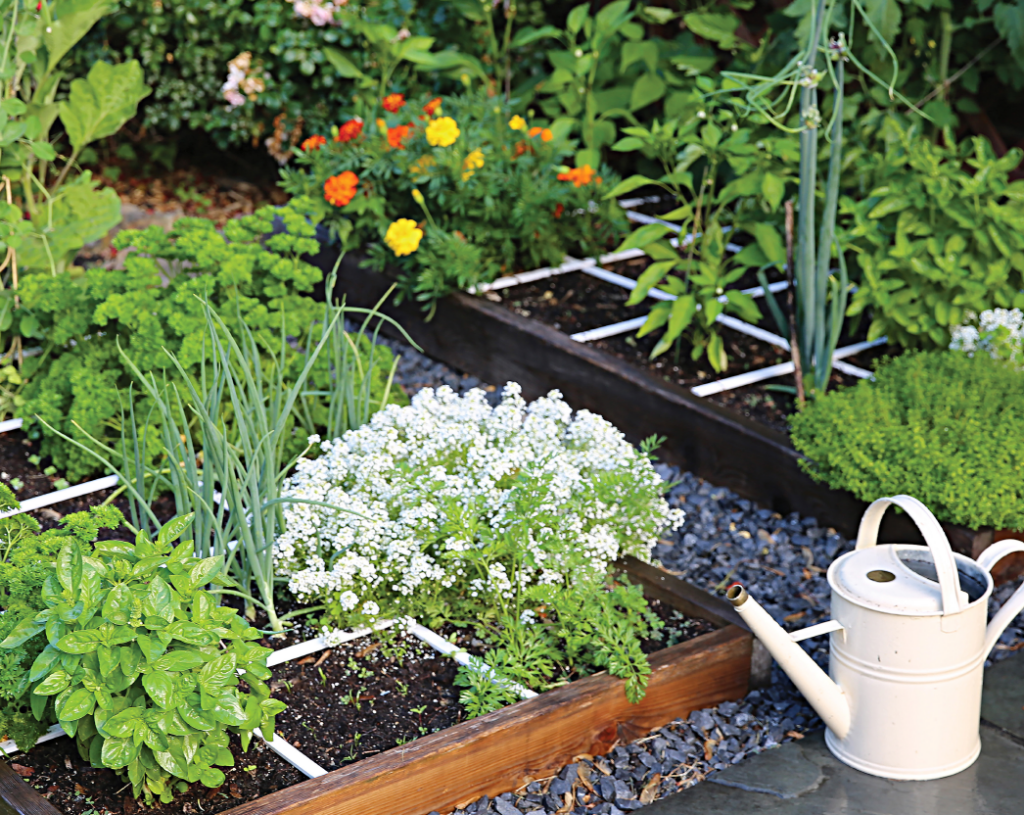JustAnotherNut
Platinum Member
- Dec 31, 2015
- 10,883
- 6,329
- 1,095
Ever wonder how much you would need to grow to provide food for yourself & family to eat for a year? That is, if you have the garden space of course. Even in smaller gardens, if you learn about other methods including intensive, successive and companion planting, you can still grow a lot of food. Not just to eat fresh, but also preserve for future meals.
This list is only a guideline so no hard & fast rules, and you will need to determine just what & how much & how often you actually eat of any one item. If it's something you and your family don't like & never eat, then don't plant any. If you only eat it say once in a while or only one or two of your family like it, then only plant the smaller number. If it's something you and/or your whole family love it and eat it often, then plant the larger number and maybe even a few more.
For an example---tomatoes that are very versatile and can be made into salsa, ketchup, bbq or taco or pasta sauce, not to mention frequent salads or as is with salt & pepper......you might want to consider planting enough for 1 or 2 more people in your household....if for a family of 4 that eats a lot of tomatoes & tomato products, consider planting the larger number for 5 or 6 people (25-30 total, instead of up to 20). Although another option especially if available garden space is minimal, is to grow a couple of plants thru the winter indoors for a continued harvest.
To determine just how much of any vegetable you eat and how much you would need to plant...….keep track of what you eat now for a week, then times that by 52. This is only a rough estimate, but can give you an idea of what you would need. Also consider ingredients and herbs for those products when calculating your needs.
How much should you plant in your garden to provide a year’s worth of food?
Artichokes
1-4 plants per person
Asparagus
10-12 plants per person
Beans, Bush
10-20 plants per person
Beans, Lima
10-20 plants per person
Beans, Pole
10-20 plants per person
Beets
10-20 plants per person
Broccoli
5-10 plants per person
Brussels Sprouts
2-8 plants per person
Cabbage
3-10 plants per person
Carrots
10-40 plants per person
Cauliflower
3-5 plants per person
Celeriac
1-5 plants per person
Celery
3-8 plants per person
Corn
12-40 plants per person
Cucumbers
3-5 plants per person
Eggplant
1 plant per person, plus 2-3 extra per family
Kale
1 5’ row per person
Lettuce
10-12 plants per person
Melons
2-6 plants per person
Onions
40-80 plants per person
Peas
25-60 plants per person
Peppers
5-6 plants per person
Potatoes
10-30 plants per person
Pumpkins
1 plant per person
Rhubarb
2-3 crowns per person
Spinach
10-20 plants per person
Summer Squash
2-4 plants per person
Winter Squash
2 plants per person
Sweet Potatoes
5 plants per person
Tomatoes
2-5 plants per person
This list is only a guideline so no hard & fast rules, and you will need to determine just what & how much & how often you actually eat of any one item. If it's something you and your family don't like & never eat, then don't plant any. If you only eat it say once in a while or only one or two of your family like it, then only plant the smaller number. If it's something you and/or your whole family love it and eat it often, then plant the larger number and maybe even a few more.
For an example---tomatoes that are very versatile and can be made into salsa, ketchup, bbq or taco or pasta sauce, not to mention frequent salads or as is with salt & pepper......you might want to consider planting enough for 1 or 2 more people in your household....if for a family of 4 that eats a lot of tomatoes & tomato products, consider planting the larger number for 5 or 6 people (25-30 total, instead of up to 20). Although another option especially if available garden space is minimal, is to grow a couple of plants thru the winter indoors for a continued harvest.
To determine just how much of any vegetable you eat and how much you would need to plant...….keep track of what you eat now for a week, then times that by 52. This is only a rough estimate, but can give you an idea of what you would need. Also consider ingredients and herbs for those products when calculating your needs.
How much should you plant in your garden to provide a year’s worth of food?
Artichokes
1-4 plants per person
Asparagus
10-12 plants per person
Beans, Bush
10-20 plants per person
Beans, Lima
10-20 plants per person
Beans, Pole
10-20 plants per person
Beets
10-20 plants per person
Broccoli
5-10 plants per person
Brussels Sprouts
2-8 plants per person
Cabbage
3-10 plants per person
Carrots
10-40 plants per person
Cauliflower
3-5 plants per person
Celeriac
1-5 plants per person
Celery
3-8 plants per person
Corn
12-40 plants per person
Cucumbers
3-5 plants per person
Eggplant
1 plant per person, plus 2-3 extra per family
Kale
1 5’ row per person
Lettuce
10-12 plants per person
Melons
2-6 plants per person
Onions
40-80 plants per person
Peas
25-60 plants per person
Peppers
5-6 plants per person
Potatoes
10-30 plants per person
Pumpkins
1 plant per person
Rhubarb
2-3 crowns per person
Spinach
10-20 plants per person
Summer Squash
2-4 plants per person
Winter Squash
2 plants per person
Sweet Potatoes
5 plants per person
Tomatoes
2-5 plants per person
 can I kiss you??????
can I kiss you??????